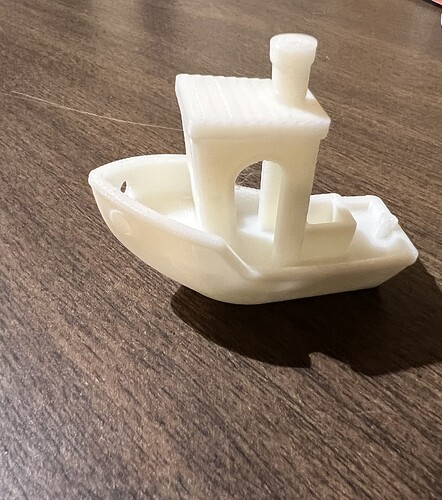Hi @Brian_Klenk and welcome to the forums.
Sorry to hear you have been having issues with your printer…
What I would suggest is going over the entire printer to double check that all bolts are tight and firmly in place. I would also recommend checking over all of the rollers… you mention that some of them were really tight and I think they all need tweaking slightly. What I would recommend is working your way around the rollers adjusting the eccentric nuts, you want to be able to turn the rollers by hand but still feel friction, they should be adjusted so that all rollers on the same fixture feel the same but with no wobble.
Once you have got the bolts and rollers all checked over I would recommend performing the leveling procedure to make sure everything is square, your printer seems to have the bed adjustment screws so I would recommend tightening them all up so that they cant come undone easily on their own, you dont want the springs to be fully compressed but you want them firm enough that if you brush your finger over the adjustment wheel that it doesnt move easily out of place. For a rough guide… on my Ender 3 V2 the screws would poke out from the bottom of the adjusters by approx 5-8mm. Once you have them all roughly equally adjusted I would move on to the actual leveling process on the printer…
I am not familiar with the Neo but I would presume it has 2 leveling procedures like most of the printers with probes which would be manual leveling and auto bed leveling. Perform the manual leveling to get the nozzle at the correct height from the bed, best to always ignore the centre of the bed and just concentrate on the four corners. Keep going around the bed (preferably in a clockwise or anti-clockwise direction) until you dont have to adjust a single bed screw, once you make it round the bed 2 or 3 times without having to make an adjustment your bed will be as level as it can be. At this point I would then start the Auto Leveling process that utilises the probe. The printer will use the probe to mesh out the bed and teach itself where the high and low points are so that it can compensate during the print. Once the auto leveling is complete head into the menus and be sure to store/save the settings just to be sure everything is saved.
Once thats all done you would then start a print and wait for the nozzle to begin laying the first layer of filament down, best to use a model with a large surface area so you have plenty of time during the first layer to make adjustments… during the printing of the first layer use the printer controls to manually adjust the z offset to suit, you want the nozzle to be close enough that its kind of pushing the filament into the bed rather than dropping it onto the bed or squishing it too hard. After a few tries you should find the sweet spot. Once done be sure to again save/store the settings to make sure everything is saved.
You should then find the printer will print ok for you, if ever you notice print issues from there on its usually just a case of either re-running the auto leveling to create an up to date fresh mesh of the bed or tweak the z offset slightly.
Also be sure to clean your print bed with something like IPA between prints to ensure the bed is clean and free of any grease as the smallest bit of grease or debris can cause a print to lose adhesion and fail 
I apologise for the essay but wanted to try and cover all bases 
I also stumbled on this video which should help you with the leveling process, the link should take you straight to the bit in the video where he does the bed leveling…
Creality Ender-3 Max Neo - Overview & Bed Leveling
Good luck and hope it helps 

